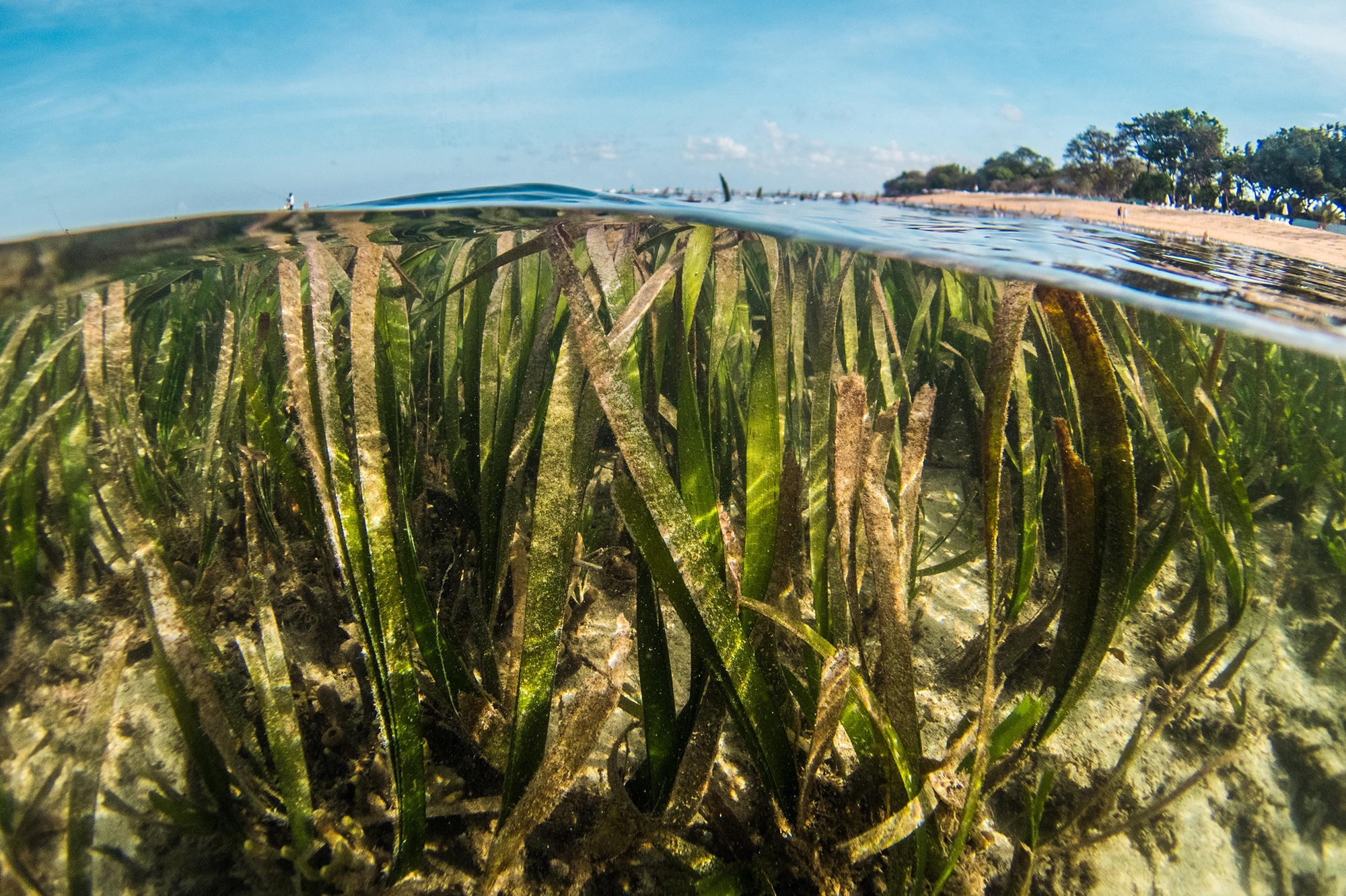Story
Maximising the potential of Blue Carbon ecosystems
6 December 2023
PML scientist contributes to new Blue Carbon policy brief that outlines the ways in which coastal blue carbon ecosystems are currently ‘actionable’ for climate mitigation, based on the best available science and existing management practices.

Seagrass. Benjamin Jones | Unsplash
Blue carbon habitats, such as mangroves, seagrasses, tidal marshes and kelp forests, are the most efficient natural carbon sinks on Earth. Studies suggest that blue carbon habitats sequester carbon at a rate 10 times greater than mature tropical forests as well as storing three to five times more carbon per equivalent area than tropical forests.
In addition to their climate mitigation potential, coastal blue carbon ecosystems provide a range of other benefits to society, including biodiversity protection, food security and protection from the impacts of coastal flooding, erosion and storms. It is clear that these habitats are ecologically, economically and socially important and therefore require robust management and protection.
This new policy brief, entitled ‘Actionable Blue Carbon Ecosystems for Climate Mitigation and Adaptation’, aims to provide guidance on blue carbon ecosystems that are currently ripe for climate mitigation through appropriate management, allowing for sustainable carbon emission reduction or increased removal. The brief also identifies ecosystems that are ‘emerging’ and have meaningful carbon removal potential in the future.
Professor Ana Queirós, Marine and Climate Change Ecologist at PML and contributing author on the report, said:
“The conservation and restoration of blue carbon ecosystems has a role to play in the delivery of the Paris Agreement, and indeed many countries now include them in their Nationally Determined Contributions (NDC). This policy brief provides a key overview of the types of ecosystems where that delivery is already actionable, and highlights key gaps where the science is currently developing. Research we are doing at PML, in the UK and Europe, will help close some of those gaps”.
The development of the policy brief was led by Conservation International, the Blue Carbon Initiative, the International Partnership for Blue Carbon and the International Blue Carbon Institute, and is adapted from Howard et al. (2023), Lovelock and Duarte (2019), and an earlier version of the brief published in 2021.
Related information
Actionable Blue Carbon Ecosystems for Climate Mitigation and Adaptation